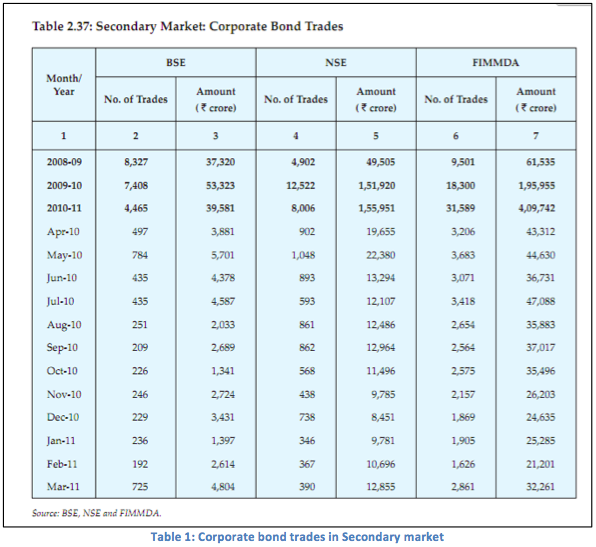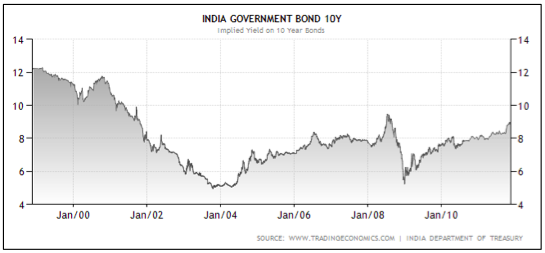Ajay Shah s blog Concerns about individual investors on the Indian equity derivatives market_1
Post on: 15 Апрель, 2015 No Comment

Tuesday, July 29, 2014
Concerns about individual investors on the Indian equity derivatives market
by Nidhi Aggarwal, Rohini Grover, Susan Thomas .
A recent article in the Business Standard by Praveen Chakravarty and T. V. Somanathan questions the quality of the Indian equity derivatives market. India is ranked next only to South Korea in terms of both the intensity of derivatives to spot traded volumes and the dominance of retail participation in derivatives trading. It is argued that complex financial instruments are better suited to the requirements of sophisticated institutional investors.
Korea has tried to reduce the large fraction of retail participation in their derivatives markets by increasing the minimum contract size twice between 2012 and 2014. The authors suggest that India consider taking similar action, or increase securities transactions taxes, to deflect retail interest in equity from derivatives trading to spot trading.
Facts about retail investors and their dominance in equity derivatives trading in India
The article says there are 97% retail speculators, and later says there are 83-87% of both retail and proprietary trading. What are the facts?
Exchanges record every trade as a pair of buy and sell orders originating from a specific participant category. There are three broad categories of participant. Custodian trades which mark trades by institutions. Proprietary trades which mark trades by brokers for their own account. The remainder, which are Neither custodian or proprietary trades, are recorded as the retail investor, which include individual investors along with others. Not all that is not an institutional trade is a trade by an individual investor.
We focus on the fraction of the derivatives trade the options, both options on Nifty and single securities. In trading on these instruments, the shares are:
- Nifty options where daily traded volumes are around Rs.1200 billion
- Institutions = 20%
Thus, retail individual investor participation are just 30-40 percent of the options trading in Indian equity.
Korean thinking on reducing retail participation
A series of research papers using trade data from Taiwan and Korea found some evidence that individual investors consistently made losses on their trades, and that institutional investors made profits at their expense on average. Such evidence led Korean regulators to explore interventions to reduce the participation of individual investors in these markets and thus, minimise their losses. Their solution to the problem was to increase the minimum contract size so that individual investors find it more expensive to participate in the market, and reduce the positions they take.
Is this malady present in India? We don’t know. Would the Korean treatments pass the cost-benefit analysis as required by the Handbook . We don’t know.
In order to carry out a regulatory intervention to improve customer protection, it is first important to establish a market failure. We need to establish that there are such investors who are consistently losing. In order to do consumer protection, we must:
- Understand whether the Korean empirical regularities hold in India;

The Koreans had the first step done for them (establishing that there is a problem), and by the looks of it, are still searching for solutions. The present state of knowledge on household finance in India does not answer these questions. We don’t know if the malady is present, so the question of the treatment cannot arise.
What ails institutional participation?
The BS piece presents the participation of various players on the Indian derivatives markets as based on choice of both institutional investors, and the others. However, institutional investors have often been kept out of these markets by regulation. Examples:
- IRDA has given in-principle approval but has not given operational clarity for equity derivatives trading by insurance companies.
This market does not have institutional investors because they are being systematically kept out by regulators.
The large ratio of derivative to stock traded volume
The discomfort of a much larger traded volume in the derivative compared to the spot is an age-old one, based on fears are that (a) derivatives markets lead to higher volatility, (b) there is market abuse deriving from the leverage of derivatives, and (c) small investors get consistently and persistently hurt.
These fears are not borne out by the facts. Over the entire period that India has had equity derivatives, the volatility has come down, there has been little evidence of a larger incidence of market manipulation in stocks with derivatives, and liquidity has improved.
A research paper from the Finance Research Group analysing the single stock futures markets in India offers a possible explanation for these large derivatives volumes. This paper suggests that in markets where there are severe funding constraints there is a larger participation in derivatives, because these leveraged products allow traders to preserve the efficiency of their trading capital. These funding constraints can be for several reasons. Partly, it could be because emerging economies have a shortage of capital. Partly, it could be because institutional investors who have the capital are forcibly kept out of participating in securities markets. Other mistakes of regulation which are shaping this outcome include the failures on securities lending which hampers short selling.
The paper finds that the Indian markets have the highest dominance of price discovery in equity derivatives compared to what has been recorded in all the other literature on this subject. Information is flowing from the derivatives into the spot prices in Indian equity.
Conclusion
We should be do thorough homework before introducing regulations that interfere with the freedom of private persons. Most of the ills of Indian finance derive from weak financial economics, and lack of due process, at regulators. The solution lies in fixing the regulatory process and not in further reducing freedom.














